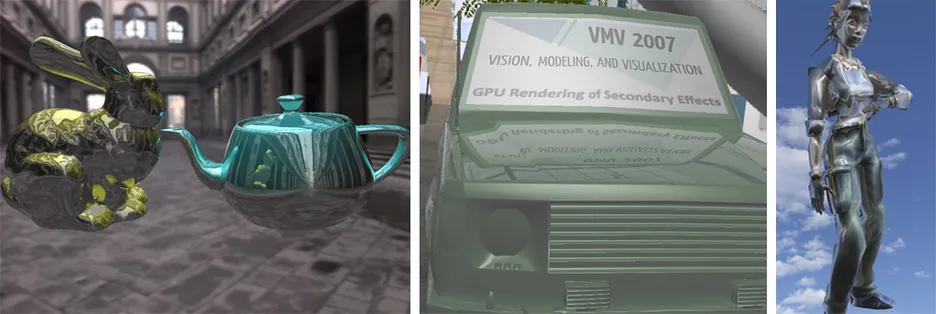GPU Rendering of Secondary Effects
Kai Bürger, Stefan Hertel, Jens Krüger, Rüdiger Westermann
Computer Graphics and Visualization Group, Technical University Munich, Germany

Background
In this paper we present an efficient data structure and algorithms for GPU ray tracing of secondary effects like reflections, refractions and shadows. Our method extends previous work on layered depth cubes in that it uses layered depth cubes as an adaptive space partitioning scheme for ray tracing. We propose a new method to efficiently build LDCs on the GPU using geometry shaders available in Direct3D 10. The overhead of peeling the scene multiple times can thus be avoided. We further show that the traversal of secondary rays is greatly accelerated by exploiting a two level hierarchy and the adaptive nature of the LDC. Due to the computational and bandwidth capacities available on recent GPUs our method enables high-quality rendering of static and dynamic scenes at interactive rates.
Associated publications
GPU Rendering of Secondary Effects
K. Bürger, S. Hertel, J. Krüger, R. Westermann
Conference on Vision, Modeling, and Visualization (VMV) 2007
[PDF][Bibtex]